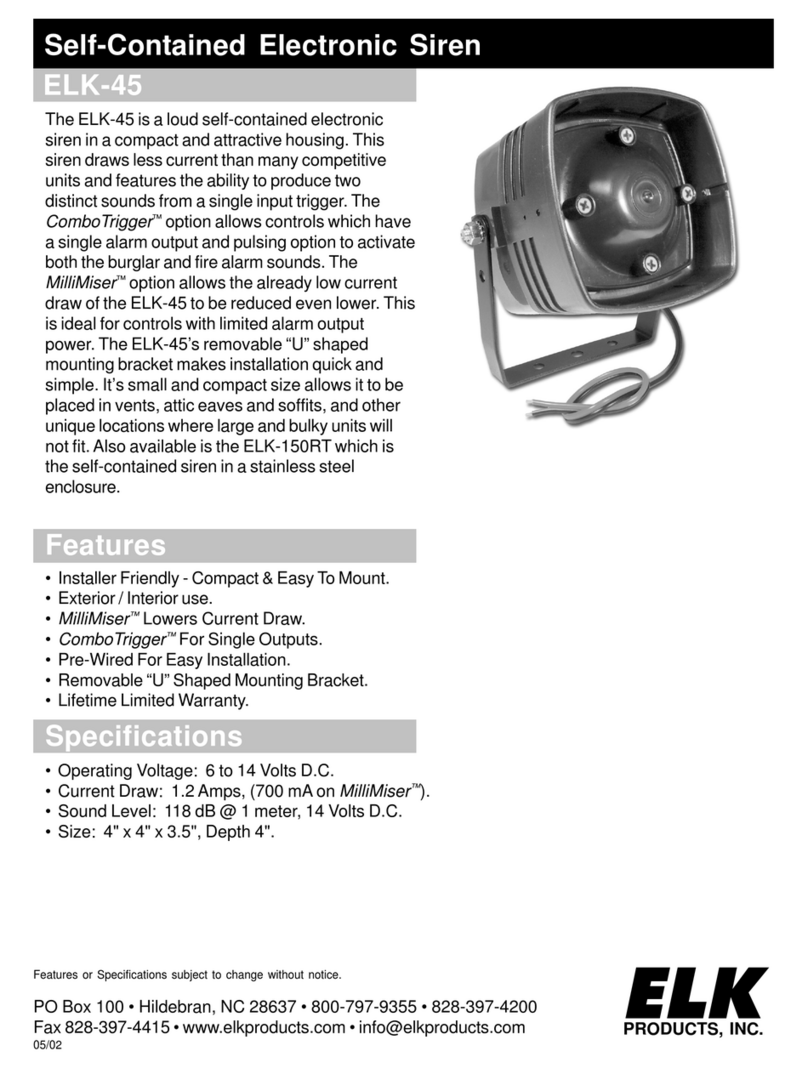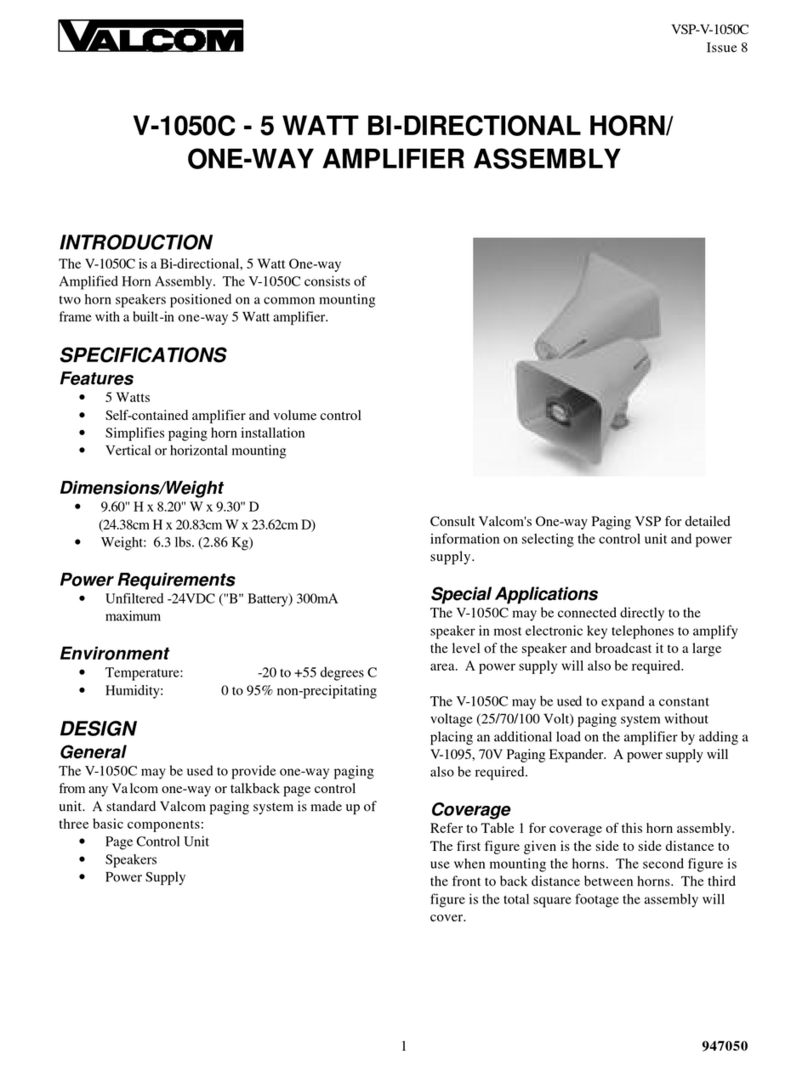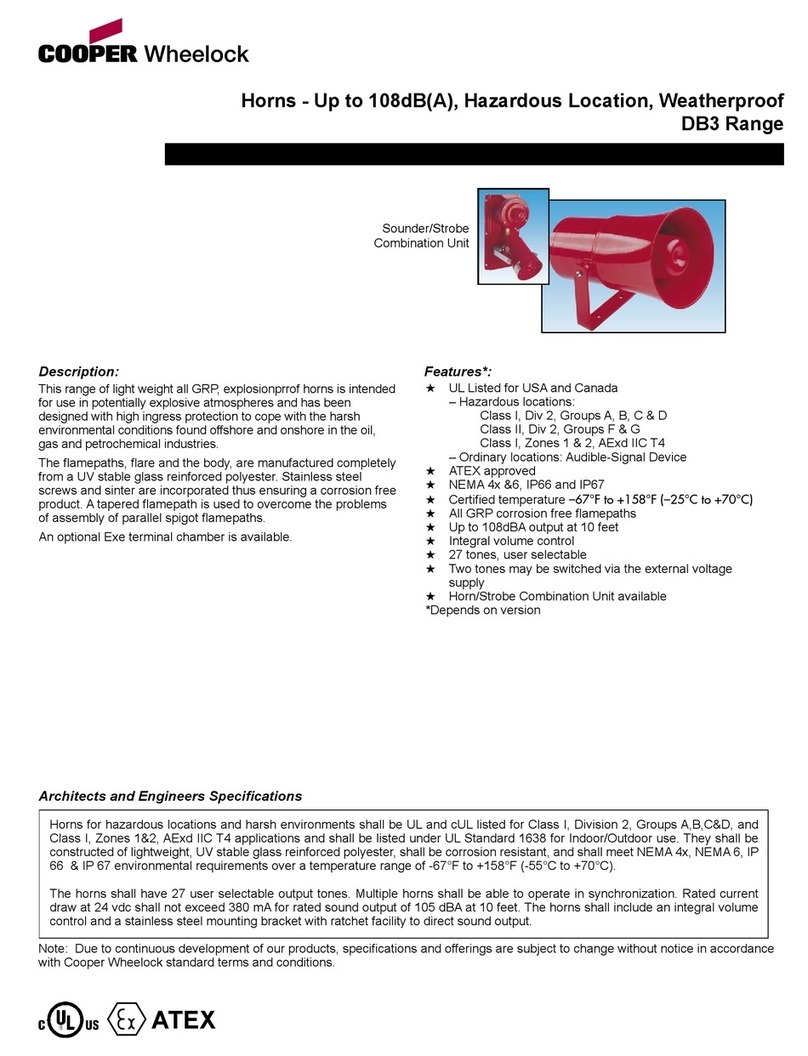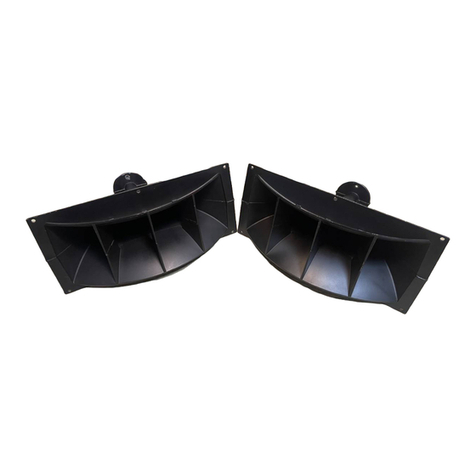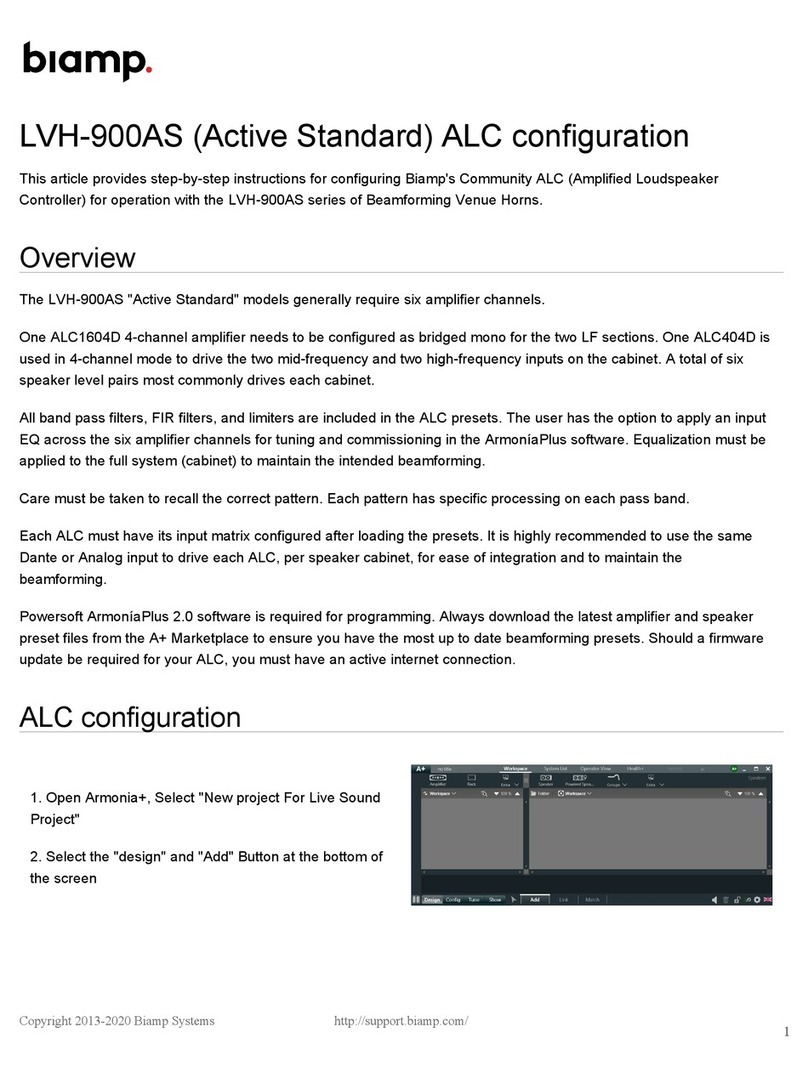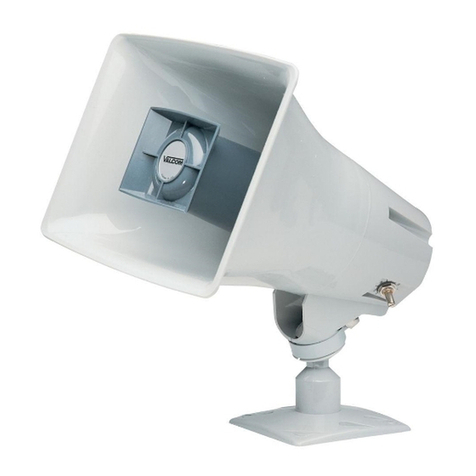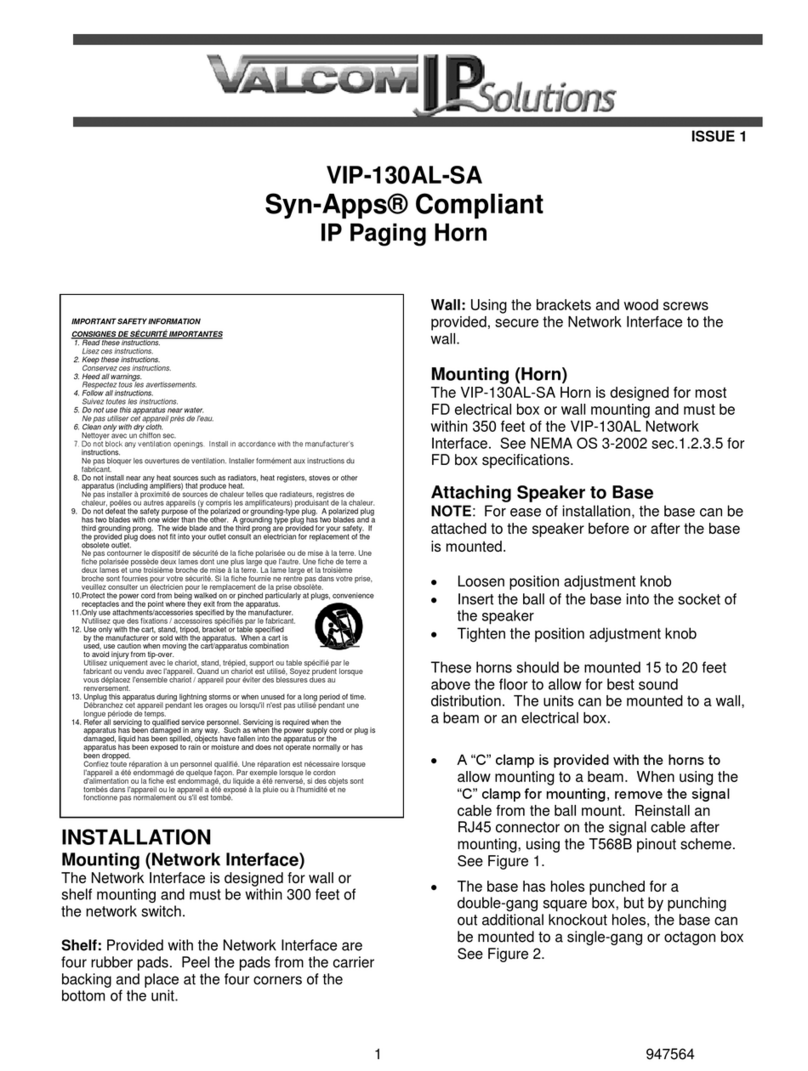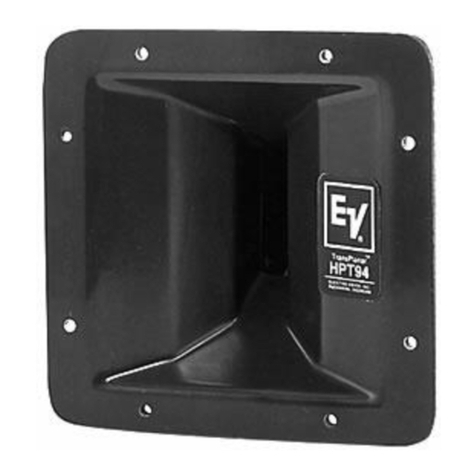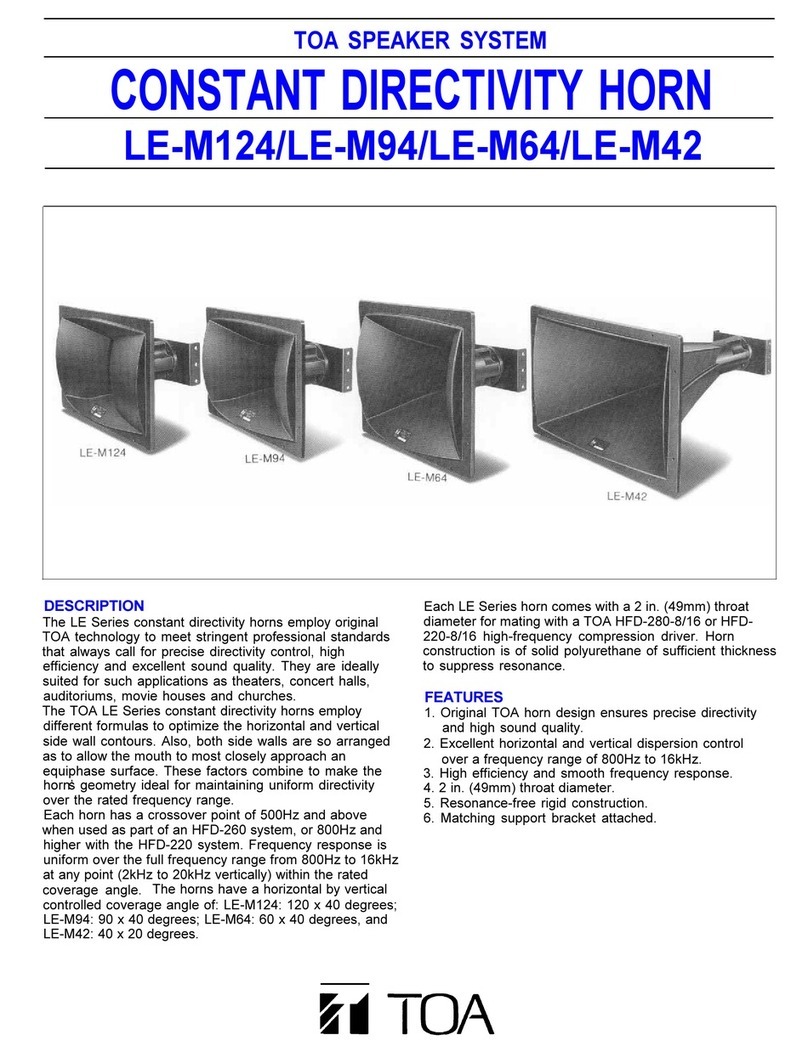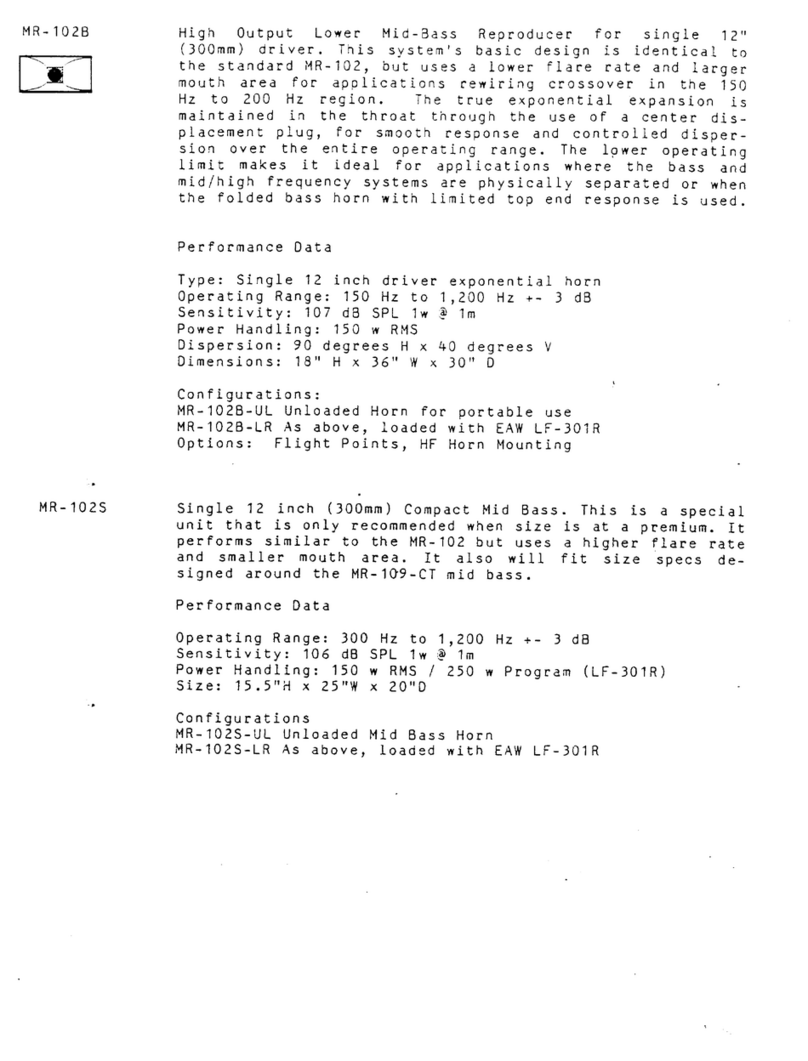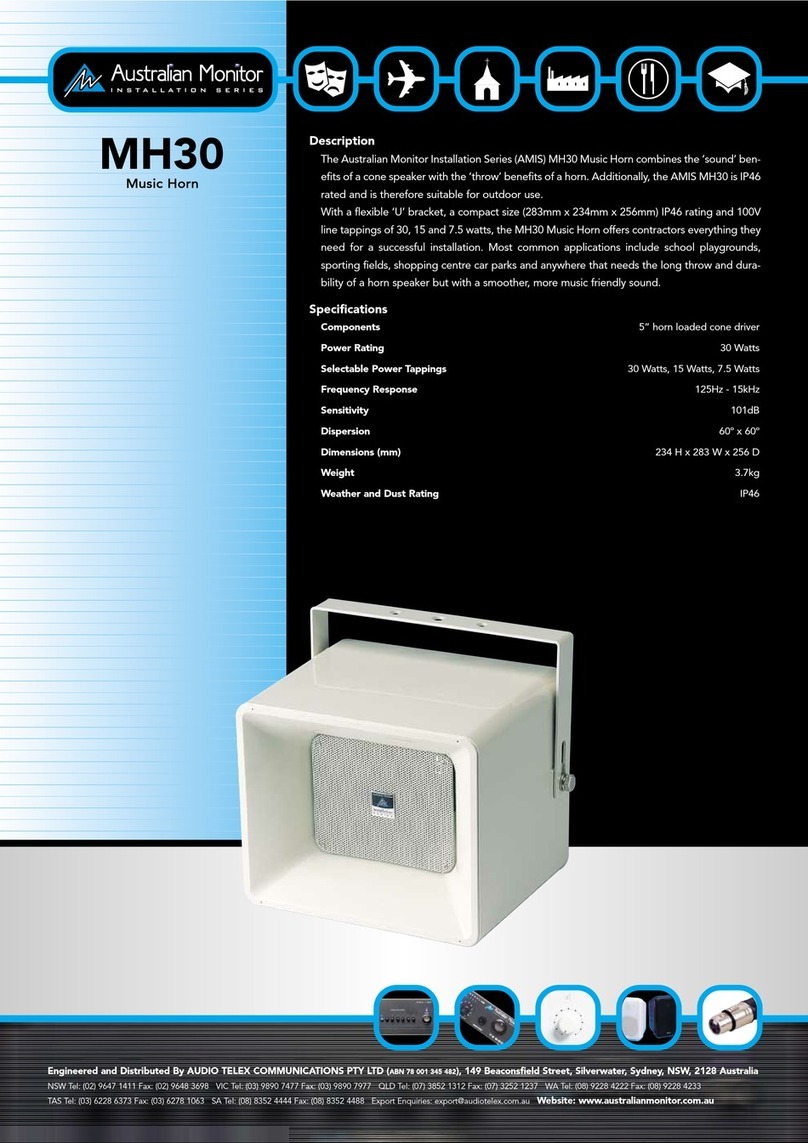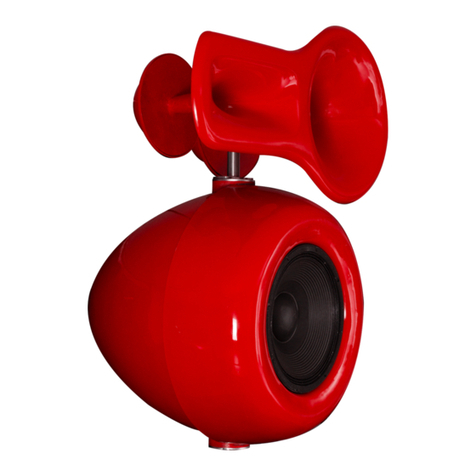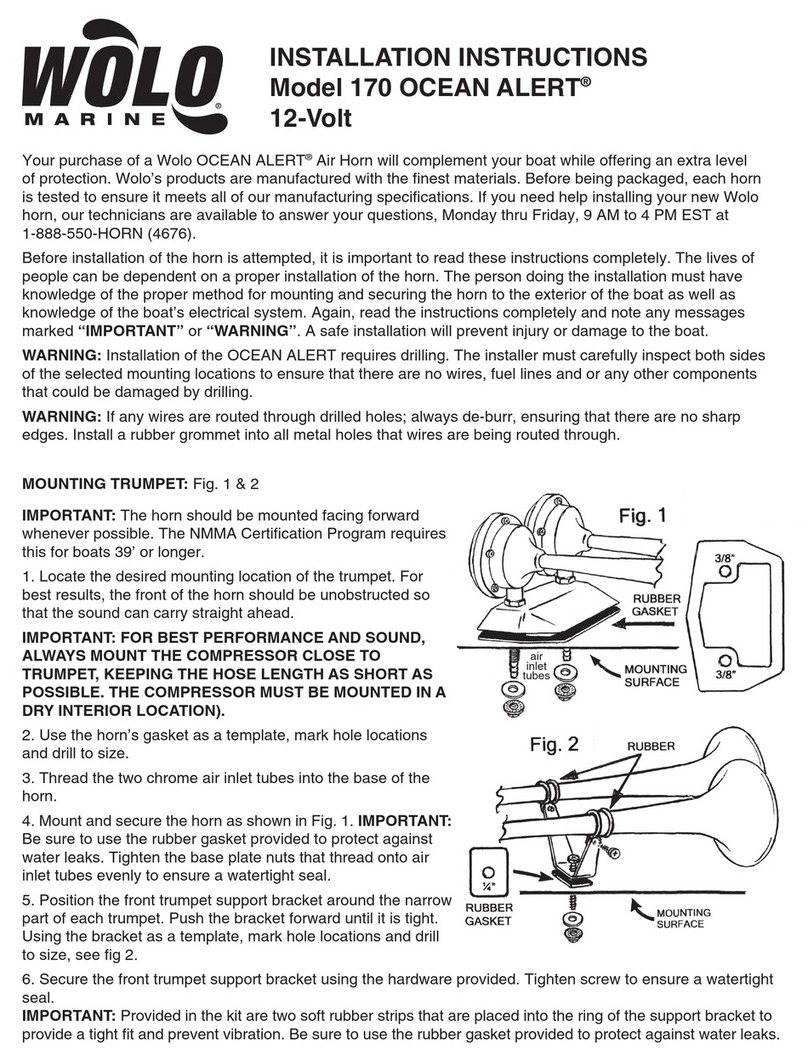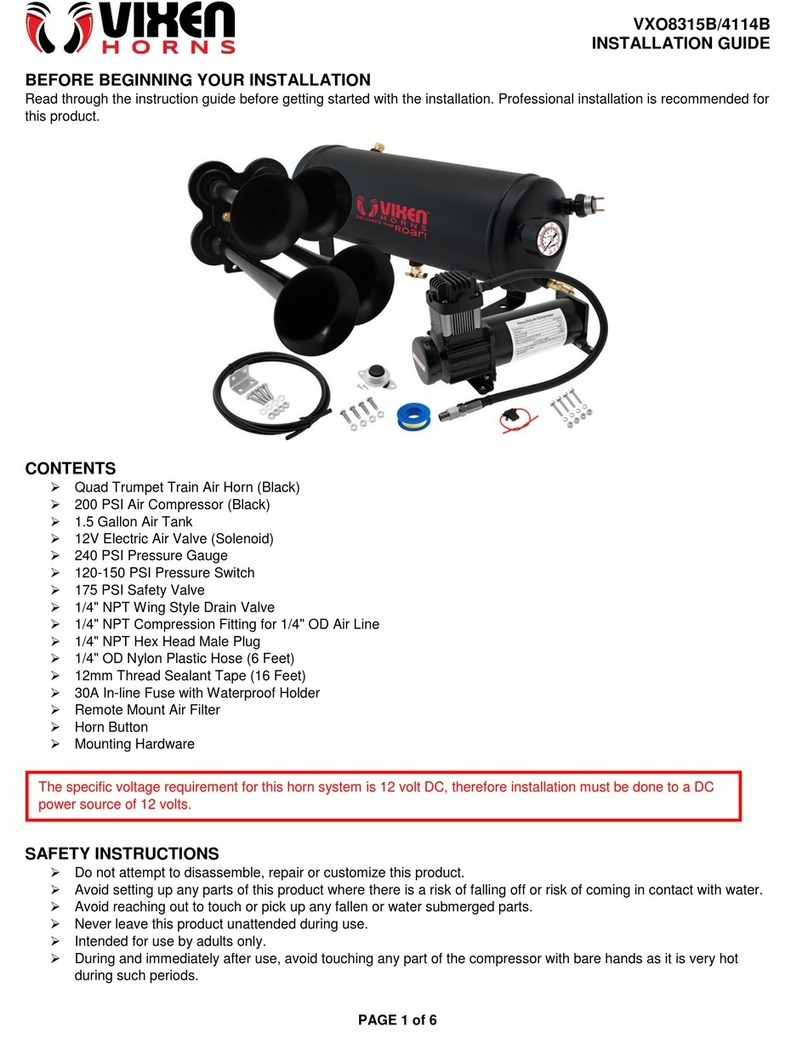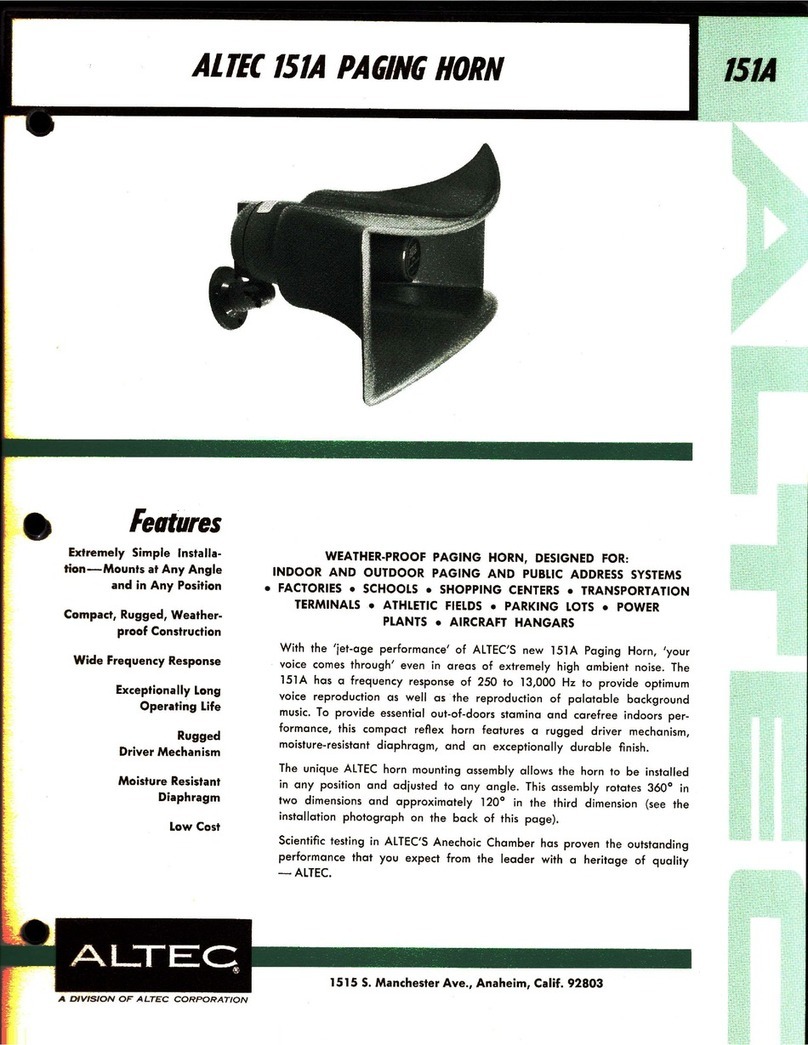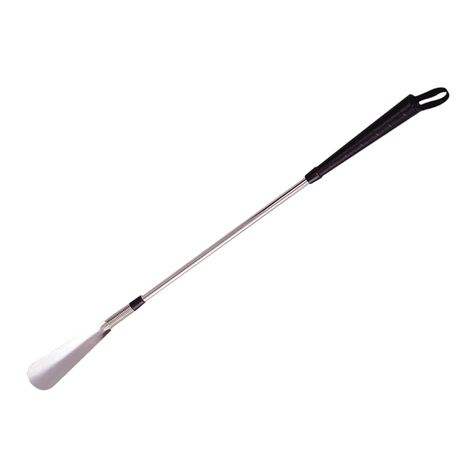
A: 9300 S.W. Gemini Drive Beaverton, OR 97008 USA W: www.biamp.com
•Powerful weatherproof, industrial horn loudspeakers with compression drivers oering high
sound pressure.
•Suited for speech and reproduction of alarm signals.
•Ideal for long-distance and outdoor use.
•70V/100V transformer with ve power tap and 8-ohm low impedance settings.
COMMERCIAL LOUDSPEAKERS
H10-G / H20-G / H30LT-G PAGING HORNS
Installation and Operation Guide
H10-G H30LT-GH20-G
DANGER: The loudspeakers described in this manual are designed
and intended to be suspended using a variety of rigging hardware,
means, and methods. Installation of loudspeakers should only be
performed by trained and qualied personnel. It is strongly recommended
that a licensed and certied professional structural engineer approve the
mounting design. Severe injury and/or loss of life may occur if these products
are improperly installed! All electrical connections must conform to applicable
city, county, state, and national (NEC) electrical codes.
DANGER: It is possible to experience severe electrical shock from a
power amplier. Always make sure that all power ampliers are in the
“OFF" position and unplugged from an AC Mains supply before
performing electrical work.
IMPORTANT: All electrical installation connections for loudspeaker
lines are subject to all applicable governmental building and re
codes. The selection of appropriate electrical hardware to interface
with the loudspeaker lies solely with the installation professional. Biamp
recommends that an appropriately licensed engineer, electrician, or other
qualied professional identify and select the appropriate conduit, ttings, wire,
etc. for the installation.
DANGER: The output power capabilities of audio ampliers present a
danger to installers. To minimize the risk of electric shock from
loudspeaker connecting cables, conrm that the power ampliers are
turned “o" before connecting loudspeaker cable(s) to the loudspeaker or
amplier. Always follow local electrical codes and proper electrical safety
procedures.
WARNING: After wiring the amplier(s) to the loudspeaker(s), rst
power-up all devices that are upstream of the amplier, such as
mixers, equalizers, compressor/limiters, etc., before powering-up the
Rigging and Electrical Safety
PRODUCT DESCRIPTION
amplier. This is to avoid passing any clicks or pops that may originate in the
upstream devices to the loudspeakers. The amplier should initially be
powered-up with its gain controls turned all the way down. After making sure
that a continuous signal is present, such as a CD playing, slowly raise the level
of the gain controls to establish that the wiring has been installed correctly.
Only then should the loudspeaker be operated at normal output levels.
Wiring and Electrical Safety
All standard paging horns come with attached SJOW-rated input cables
(length 1m [3.3']). The cable exits the enclosure through a weather-resistant
nut. The other end of the cable is un-terminated. The designer must account
and compensate for cable losses between the amplifier and the loudspeaker
system. Refer to this article on Cornerstone for more information on cable loss
calculations. Do not remove the rear enclosure or tamper with the cable nut,
as this will compromise the weather integrity of the enclosure. Please contact
Wire the loudspeaker. A typical installation method is to bring the cable
into a junction box (J-box). Connections within the J-box may be made with
appropriate wire connectors. Terminate per your local electrical code or
requirements.
NOTE: Be sure to read the loudspeaker safety guide included in
the carton with the loudspeakers.
